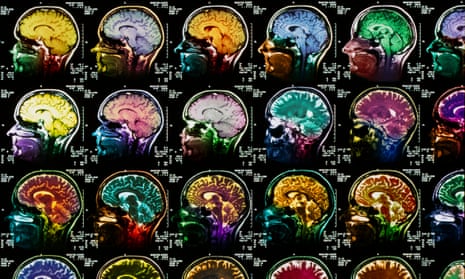Scientists have unpicked the regions of the brain involved in dreaming, in a study with significant implications for our understanding of the purpose of dreams and of consciousness itself. What’s more, changes in brain activity have been found to offer clues as to what the dream is about.
Dreaming had long been thought to occur largely during rapid eye-movement (REM) sleep, a period of slumber involving fast brain activity similar to that when awake, but dreams have also been reported to occur during non-REM sleep, leaving scientists scratching their heads as to the hallmark of dreaming.
“It seemed a mystery that you can have both dreaming and the absence of dreaming in these two different types of stages,” said Francesca Siclari, co-author of the research from the University of Wisconsin-Madison in the US.
Now it seems the puzzle has been solved.
In addition the team found that dreaming about faces was linked to increased high-frequency activity in the region of the brain involved in face recognition, with dreams involving spatial perception, movement and thinking similarly linked to regions of the brain that handle such tasks when awake.
“[It is] a proof for the fact that dreaming really is an experience that occurs during sleep, because many researchers up until now have suggested that it is just something you invent when you wake up,” said Siclari. “Maybe the dreaming brain and the waking brain are much more similar than one imagined because they partially recruit the same areas for the same type of experiences,” she added.
Experts have hailed the significance of the research, saying it could help to solve the conundrum of what dreams are for, and even the nature of human consciousness.
“The importance beyond the article is really quite astounding,” said Mark Blagrove, director of the sleep lab at Swansea University, who was not involved in the study. “It is comparable really to the discovery of REM sleep and in some respects it is even more important,” he added.
Writing in the journal Nature Neuroscience, Siclari and colleagues from the US, Switzerland and Italy, reveal how they carried out a series of experiments involving 46 participants, each of whom had their brain activity recorded while they slept by electroencephalogram (EEG) – a noninvasive technique that involved placing up to 256 electrodes on the scalp and face to monitor the number and size of brainwaves of different speeds.
While the experiments probed different aspects of the puzzle, all involved participants being woken at various points throughout the night and asked to report whether they had been dreaming. “Overall in the whole experiment we did over 1,000 awakenings,” said Siclari.
If the participants had been dreaming, they were asked how long they thought it had lasted and whether they could remember anything about their dream, such as whether it involved faces, movement or thinking, or whether it was instead a vivid, sensory experience.
Analysis of the EEG recording reveal that dreaming was linked to a drop in low-frequency activity in a region at the back of the brain dubbed by the researchers the “posterior cortical hot zone” – a region that includes visual areas as well as areas involved in integrating the senses. The result held regardless of whether the dream was remembered or not and whether it occurred during REM or non-REM sleep.
The researchers also looked at changes in high-frequency activity in the brain, finding that dreaming was linked to an increase in such activity in the so-called “hot zone” during non-REM sleep. Further, the team identified the region of the brain which appears to be important in remembering what a dream was about, finding that this recall was linked toan increase in high-frequency activity towards the front of the brain. A similar pattern of activity was seen in the hot zone and beyond for dreams during REM sleep. The upshot is that dreaming is rooted in the same changes in brain activity regardless of the type of sleep.
“You can really identify a signature of the dreaming brain,” said Siclari.
Using their findings, the team discovered that they were able to predict whether participants had been dreaming when asleep. In an experiment involving seven participants the researchers correctly predicted instances of dreaming and no dreaming 87% of the time.
The authors say the study could help shed light on the nature of consciousness, revealing what happens in the brain during sleep when we switch from being unconscious to having conscious experiences. This is hugely valuable, they add, since there are myriad complicating factors involved in comparing wakefulness versus an anaesthetised state.
The findings, adds Siclari, are surprising. “It only seems to need a very circumscribed, a very restricted activation of the brain to generate conscious experiences,” she said. “Until now we thought that large regions of the brain needed to be active to generate conscious experiences.”
Blagrove adds that the impact of the study is profound, and that understanding what is causing the changes in activity in the “hot zone” could reveal whether dreaming has a purpose, for example in memory processing. “[Such changes in activity might] provide some extra processing and part of the extra processing might be [that] you simulate the world,” he said.

Comments (…)
Sign in or create your Guardian account to join the discussion